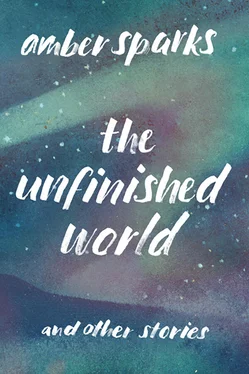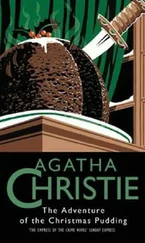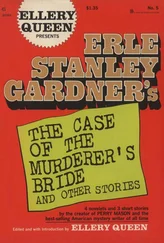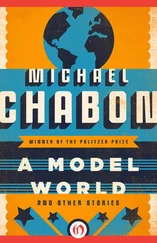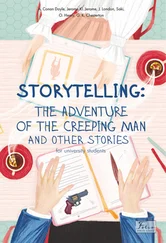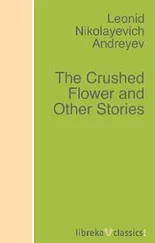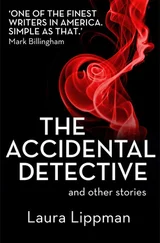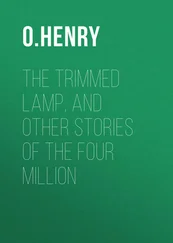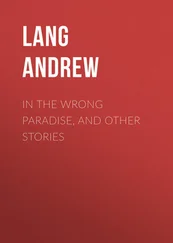The funeral was the first thing they’d ever wanted to forget. Yet with the bodies came the unbidden hoarding of memories, the desire to consume and digest their parents’ histories whole. With the bodies came the beginnings of silence, too, though neither of them much minded. Preservation of the past requires a monastic sort of quiet. A hushed pause in dusty rooms.
Before the service Louise found Clarence weeping over their mother’s coffin, trying to pry open the lid. They’re sealed shut, Clarence, she told him, grasping his hands, pulling them hard. He jerked and shuddered and his face fell into shadow. How can we remember what they looked like? he asked, and the question was acid in Louise’s veins.
Clarence and Louise were not children, but they were still young when their parents drove into a ravine and died. They were still left very much alone.

Clarence is already tall as a man, with small, restless hands. He begs bones and horns from the slaughterhouse, carves things like combs, hairpins, buttons and figurines. Louise sits beside him in their playroom, stretching scraps of hide over plaster-of-Paris frames.
Clarence and Louise are trapping death in amber. They are learning how to make time stop.

Home has always been less house than sideshow gallery, a careless museum of strange objects and curiosities, filled to the brim with cheap knickknacks and sentimental turn-of-the-century souvenirs by the hoarding habits of their great-great-grandfather and his wife.
There is a room full of sea battle dioramas, another jammed with full-size decorative staircases to nowhere. There are halls lined with ceramic dolls and jelly jars, hurdy-gurdies and Chinese puzzle boxes, tiny ivory elephants and jeweled fans. The ballroom contains a life-sized mechanical music hall orchestra that still wheezes out “It’s a Long Way to Tipperary” when you put a quarter in the slot. And the parlor is given over to the display of Victorian taxidermy tableaux. Bird-weddings and classrooms full of kittens, frogs jumping rope — the kind of extreme anthropomorphism in which the Victorians excelled. (Louise and Clarence’s great-great-uncle was a taxidermist, famous for his depictions of Beatrix Potter’s stories. Their father took up the family calling as well, though he was not in the business of animating picture books. He specialized in mounting trophies for wealthy big-game hunters and museums.)
When she was very young, perhaps four or five, Louise had been given one of the valuable antique taxidermy pieces for her very own. Her father brought it down soberly from the attic and placed it on the mantel above her hearth. It was a tableau of the story of Thumbelina, in rough chronological order, and showed Thumbelina emerging from the flower; Thumbelina, asleep in her walnut-shell cradle, carried off by the toad and her son; Thumbelina being rescued by the fish and the butterfly; Thumbelina on the swallow’s back; Thumbelina and the flower-fairy prince at the wedding, butterflies and finches dancing attendance.
Small Louise had been fascinated by the tableau, the animals caught in strange, unnatural poses. She did not care for fairy tales, but she was caught by the lifelike appearance of the creatures and wondered how her great-great-uncle had managed to achieve such a feat. Every day she would study the tiny feathers, the jet beads carefully glued in for eyes, the delicate feet and fins. She studied, Louise, and when she learned to sketch, the Thumbelina creatures were the first thing she drew.
Clarence hated the tableau. Clarence was too softhearted to stand the sight of these long-dead creatures, kept in a mockery of life, their own feathers and fur a double prison. But that was Clarence for you. Louise was made, as her father said, of sterner stuff.

Today is the day that Tony comes with the money. His driver and the other man — Jackson, Louise thinks he is called — stay in the big truck but through the window she can see a small black handgun resting on Jackson’s lap. The truck has made deep furrows in the road, still soft and wet from the rain yesterday.
Tony is pacing in front of the house now, waiting for the delivery. Waiting for Clarence. He looks up, sees her at the window, waves. He knows she will be watching because she always is. She does not wave back. She never waves back. She does not like Tony, and not because she’s afraid of him. Not exactly. He thinks he is fearsome. She has nicknamed him Tony the Tiger and he thinks it’s a compliment.
She watches Clarence head over to the carriage house, emerge with the enormous crate on a dolly. She watches him exchange the crate for Tony’s cash, watches Tony the Tiger’s flashing smile as he heaves the crate into the truck bed, watches the debris the wheels kick up as they slash through the mud and sludge.

Louise at fourteen: quiet, moon-faced, skinny white limbs with prominent veins running through them. Big nose, big eyes, small mouth, pushing long hair out of her face as she helps Father brush the fur of a Siberian tiger.
Father at forty: garrulous, charming, handsome, and mustachioed, dancing through a series of professional and personal failures. He lectures his daughter on the tiger’s mating habits, explains how important it is that they respect this creature, teach others to respect it. That is what we do, Louise, he tells her, and his eyes are merry and brown and his fingers are light and small as those of the ladies who make lace in the historical village. He, too, is making something lovely: life, complex and grave and astounding.
Not alive, he tells Louise, he is always telling Louise. We cannot strive for them to look like life.
Then what? she asks, puzzled. Her eyes are perfect mirrors of his. What should they look like?
Like a dream, her father says proudly, for he thinks of himself as a maker of dreams. The dream of a tiger, the dream of a rhino, the dream of a squirrel. The perfect form that preceded all the real tigers and rhinos and squirrels.
Louise at fourteen, shy before such brilliance, asks her father if there is a perfect form for everything in the dream. Even me? she asks.
Louise at thirty-four cannot remember now what answer her father made her, no matter how she opens her brain and shakes out the contents like an overstuffed handbag. Louise at thirty-four cannot remember.

It costs an enormous amount of money to keep up the estate, even without servants. There’s the lawn service to pay, the estate taxes, the plumbing company because these old pipes are forever breaking, the roofers because this old roof is forever leaking, and a thousand other costs besides.
And of course, there are the property taxes. Those, finally, prompted Louise to accept the offer from a friend of a friend: to meet privately with a very famous installation artist. Noel needed a discreet, talented taxidermist. His previous taxidermist had just died, No, not that sad, dear, he was good lord nearly a hundred so don’t worry about that, but we need a new and brilliant one now, don’t we? Noel speaks often in the royal “we,” though his bizarre Brooklyn/posh London mash of an accent sounds more like a bad imitation of both.
She has always considered herself an artist, anyway, and she doesn’t like the limelight, so this arrangement suits them both perfectly. Noel pays her well, she pays the property taxes, and she can continue doing exactly what she likes and allowing Clarence to do the same.
Читать дальше
